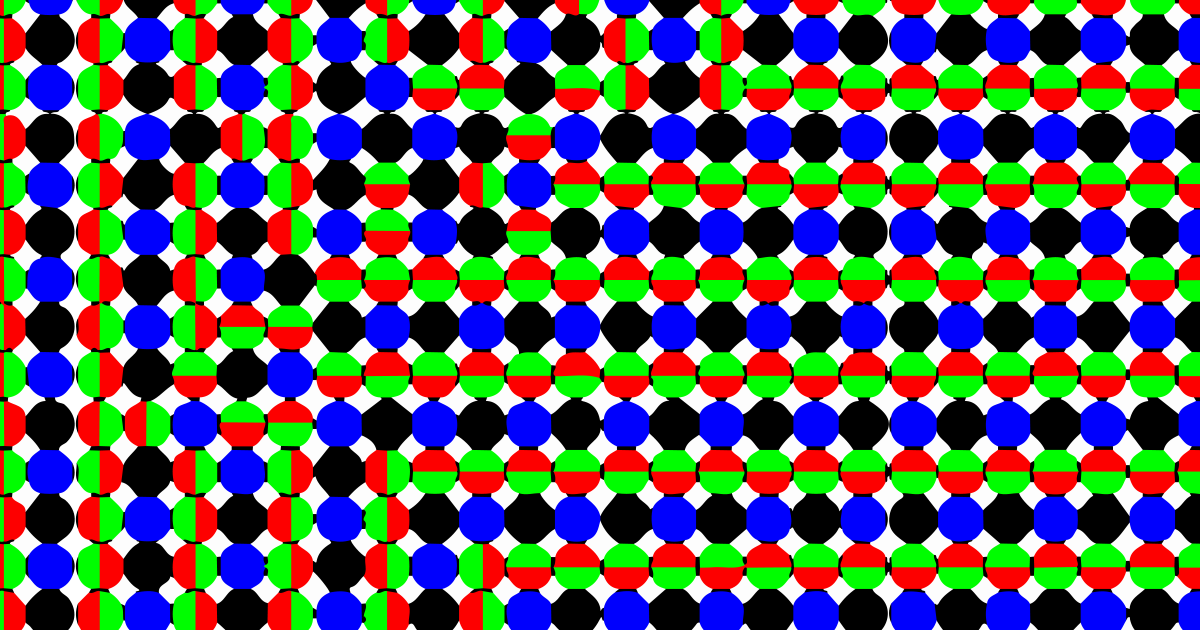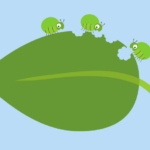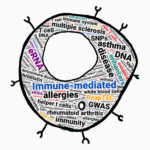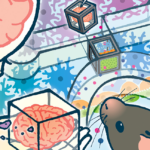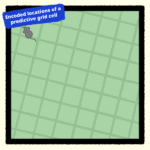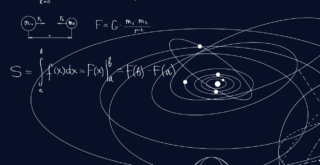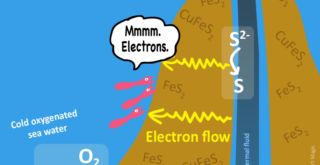In fish and other animals, the color detecting cone cells in the retina are arranged in specific patterns, and this is believed to be important for allowing animals to properly sense their surroundings. Now, in research published in Physical Review E, an interdisciplinary group of physicists and biologists have used a mathematical model to determine how the cone cells in zebrafish—a common experimental fish model—are arranged in a specific pattern in all individuals. It turns out that small defects in the patterns lead the cells to arrange themselves into only one of two possible patterns that might otherwise emerge.
The eyes of these fish have four different types of cone cells, which sense blue, ultraviolet, and a combination of red and green. The “double cone” cells that sense red and green can be arranged in different orientations, so the cells can end up in a pattern of ultraviolet, blue, and red/green cells in different patterns. As the fish eyes develop, these cells originate from an area called the ciliary marginal zone, differentiate into the different cone cells, and arrange themselves into a random pattern. However, they eventually rearrange themselves into a certain pattern. One hypothesis is that the patterns emerge from the different adhesion force between the cells in various orientations. Essentially, they end up in a pattern that has the lowest energy level.
“While this is well known,” explains Noriaki Ogawa, the first author of the paper, “there is an unexplained problem. It turns out there are two patterns with the same lowest energy level, one parallel to the growth of the retina and the other perpendicular to it, so that they are simply the same pattern but rotated 90 degrees. In real fish, however, only one of the two patterns is actually found.”
The authors realized there must be some mechanism leading to that pattern. They found that though the two patterns are equivalent if looked at using a static model, they were not so in a dynamic setting. Using a mathematical model, dynamic pattern selection, they discovered that small flaws that appear in the pattern can disrupt it and drive it to rearrange itself in a way that always leads to the pattern found in real fish.
“This is an important finding,” explains Ogawa, “because this could have implications for the development of other structures in many organisms.” “There is much work to be done to fully explain the situation,” he continues. “We do know that there are other mechanisms, namely concentration gradients of chemicals, known as morphogens, that direct the development process, and the polarities of cells. In order to fully understand how these patterns emerge in real organisms, we also need to understand the relationship between these mechanisms, and also to experimentally determine the actual adhesion strength between cells and other parameters.”
The work was conducted by scientists from the RIKEN Interdisciplinary Theoretical Science Research Group (iTHES) and interdisciplinary Theoretical & Mathematical Sciences group (iTHEMS). ?
In fish and other animals, the color detecting cone cells in the retina are arranged in specific patterns, and this is believed to be important for allowing animals to properly sense their surroundings. Now, in research published in Physical Review E, an interdisciplinary group of physicists and biologists have used a mathematical model to determine how the cone cells in zebrafish—a common experimental fish model—are arranged in a specific pattern in all individuals. It turns out that small defects in the patterns lead the cells to arrange themselves into only one of two possible patterns that might otherwise emerge.
The eyes of these fish have four different types of cone cells, which sense blue, ultraviolet, and a combination of red and green. The “double cone” cells that sense red and green can be arranged in different orientations, so the cells can end up in a pattern of ultraviolet, blue, and red/green cells in different patterns. As the fish eyes develop, these cells originate from an area called the ciliary marginal zone, differentiate into the different cone cells, and arrange themselves into a random pattern. However, they eventually rearrange themselves into a certain pattern. One hypothesis is that the patterns emerge from the different adhesion force between the cells in various orientations. Essentially, they end up in a pattern that has the lowest energy level.
“While this is well known,” explains Noriaki Ogawa, the first author of the paper, “there is an unexplained problem. It turns out there are two patterns with the same lowest energy level, one parallel to the growth of the retina and the other perpendicular to it, so that they are simply the same pattern but rotated 90 degrees. In real fish, however, only one of the two patterns is actually found.”
The authors realized there must be some mechanism leading to that pattern. They found that though the two patterns are equivalent if looked at using a static model, they were not so in a dynamic setting. Using a mathematical model, dynamic pattern selection, they discovered that small flaws that appear in the pattern can disrupt it and drive it to rearrange itself in a way that always leads to the pattern found in real fish.
“This is an important finding,” explains Ogawa, “because this could have implications for the development of other structures in many organisms.” “There is much work to be done to fully explain the situation,” he continues. “We do know that there are other mechanisms, namely concentration gradients of chemicals, known as morphogens, that direct the development process, and the polarities of cells. In order to fully understand how these patterns emerge in real organisms, we also need to understand the relationship between these mechanisms, and also to experimentally determine the actual adhesion strength between cells and other parameters.”
The work was conducted by scientists from the RIKEN Interdisciplinary Theoretical Science Research Group (iTHES) and interdisciplinary Theoretical & Mathematical Sciences group (iTHEMS). ?
Ogawa N, Hatsuda T, Mochizuki A, Tachikawa M (2017) Dynamical Pattern Selection of Growing Cellular Mosaic in Fish Retina. Physical Review E. doi: 10.1103/PhysRevE.96.032416
[yuzo_related]

